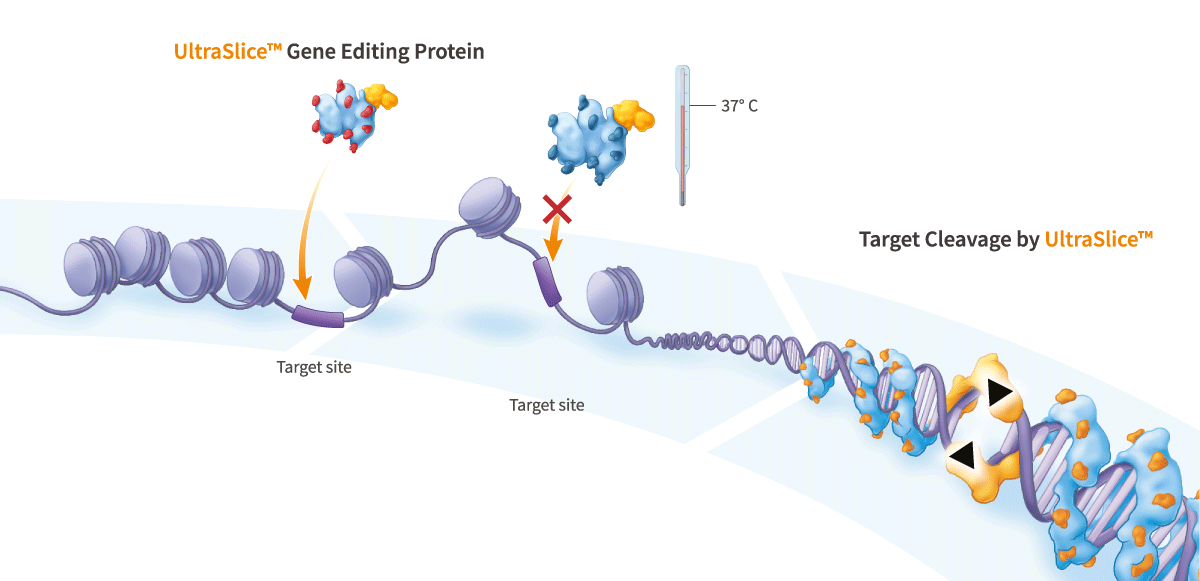Temperature-Tunable Gene-Editing Endonuclease
Download our Technology Catalog
Overview
Conventional approaches to in vivo gene editing using viral vectors or lipid nanoparticles can result in limited tissue-targeting.
Our scientists developed a novel high-specificity gene-editing endonuclease that exhibits high-efficiency ontarget cutting at sub-physiological temperatures4.
This technology can be used to target cutting activity to specific organs and tissues, allowing higher doses, minimizing systemic effects, and enabling enhanced safety for therapeutic applications.
The Temperature-Tunable Gene-Editing Endonuclease is protected by a pending U.S. patent (with additional patents pending in other countries).
4Osayame, Y., et al. Mol Ther, Vol 29 No 4S1, 2021.
Example Applications
- Ultra-high efficiency editing of primary cells and pluripotent stem cells
- Ultra-high specificity gene editing
- Virus-free and DNA-free gene editing
- Gene repair using a DNA-repair template
- Donor sequence insertion into a target genomic locus (e.g., TRAC, AAVS1 safe harbor, etc.)
- Gene-editing therapies (ex vivo and in vivo)
- Autologous and allogeneic engineered cell therapies (e.g., CAR-T, CAR-NK, stem cell-derived therapies, etc.)
- Combine with Factor’s mRNA Cell Reprogramming technology to generate models of genetic disease, gene-corrected patient-specific cell therapies, and allogeneic (i.e., immuno-nonreactive or “stealth”) cell therapies, including allogeneic pluripotent stem cell-derived CAR-T and CAR-NK cell therapies for the treatment of cancer, and engineered mesenchymal stem cell (MSC) therapies for regenerative medicine, wound-healing, inflammatory and auto-immune diseases, and tumor-targeting applications